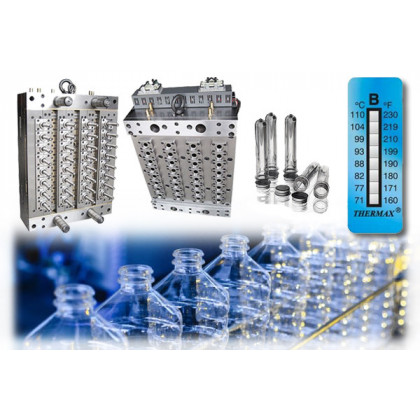During the production process of plastic bottles, one of the most important variables to consider is temperature. When plastic is melted, and bottles are formed by extrusion, temperature is key to obtaining a good product.
Industrially produced plastic bottles are quite sensitive to temperature. Any slight changes could lead to the disposal of the products that lack the characteristics demanded by the buyers.
Why is temperature control necessary in the plastic bottle production process?
The process variables that can most affect the viability of plastics are temperature and relative humidity. When these two factors remain within a very specific range, the plastic bottles turn out perfect.
In the case of high-temperature plastics and others, the viscosity of the material is crucial in the industrial process. Normally, the temperature should be above 250 °C so that the viscosity decreases to the appropriate level (in the case of plastics). This viscosity will allow the materials to be shaped as needed, hence the importance of keeping this parameter in a very limited range.
How can we control this parameter in the production of plastic bottles?
One of the simplest and most affordable methods to perform proper control of this variable is to use temperature labels. These temperature sensors are adhesive and can be stuck to any surface. Once they are in place, they will permanently change colour when the indicated temperature is reached. This way, checks can be performed any time throughout the production chain and ensure that work is being carried out at the desired temperatures. Additionally, these temperature sensors have no wires or batteries and, therefore, do not interfere with the other components.
Different options are also available to control the temperature of the plastic bottle manufacturing process. In fact, there are different procedures like injection moulding or thermoforming for plastics in general. As for the typical PET bottles, values are controlled using pyrometers, which provide readings every 6 milliseconds, or using thermographic cameras, which have a frequency of 100 Hz. With these solutions, the aim is to maintain 250 °C throughout the process.
These two possibilities are used quite frequently. However, several sensors and thermometers can be used. The idea is to stop the bottle manufacturing process when the temperature is too high or too low. Until the ideal temperature is restored, the process will not be resumed.
Problem with temperature control when melting plastic
The main advantage of controlling values during the process is that the disposal of defective batches is avoided. When the temperature is not within the desired values, it is common for plastic bottles not to have the shape that was initially designed; bottles may bend or even break.
Sometimes, the probes or pyrometers that control the process can deteriorate and provide erroneous measurements. In these cases, using a solution like the irreversible temperature strips can help detect the problem in time to correct it. This prevents the production of defective batches
In short, during the production process of plastic bottles, it is crucial to take into account the melting temperature for plastic. Using appropriate sensors, we can guarantee that the manufacture of plastic bottles remains optimized at all times.

